Ingredients
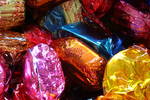 | Some coloured transparent plastic eg sweet papers | 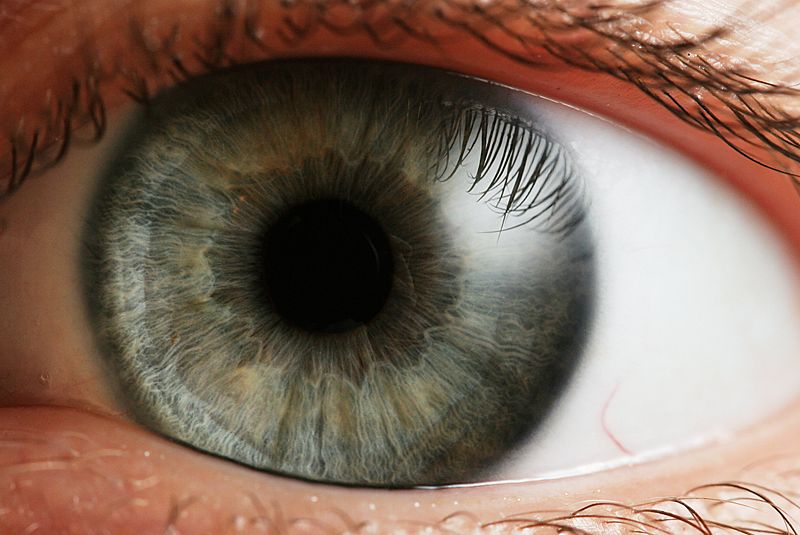 | A couple of eyes - preferably your own. |
Instructions
Hold a piece of coloured plastic over one eye for 2-3 minutes
Take it off...
Try looking at the world through one eye and then the other, do you notice anything odd?
What happens if you try a different colour of plastic?
Result
You should find that when you remove the coloured plastic everything looks the wrong colour. If you used green plastic the world looks purple, yellow slightly blue.
| |
| Removing an orange filter from in front of your eyes is a bit like this - this is actually done with a digital camera which is designed to mimic what you see with your eyes, so it behaves similarly. |
Explanation
Your eye is constantly doing what is know in the world of photography as white balancing. You see the world in a variety of different coloured lights, a sunny day, a cloudy day and sunset all have very different colours of light so the light bouncing off an object will vary from minute to minute. However you are really interested in what the object is not the exact colour of the light boucing off it, so your eyes compensate. Over a wide range of colours of illumination you will see a white piece of paper as white, you can see how much the colour actually changes by taking photographs with a digital camera with a fixed white balance setting.
This white balancing means that if you look at the world through a yellow piece of plastic your eye will try too see a white piece of paper as still white by becoming much more sensitive to blue light. Then when you remove the piece of plastic your eyes take a while to adjust and the world looks blue.
How do your eyes do the white balancing?
It is actually related to why it takes your eyes a few minutes to adjust to the dark properly. Light is converted into electrical nerve signals by the cells at the back of your eye in your retina. The light is actually absorbed by a proteins in these cells called opsins (visual purple is one). When these absorbs some light they change structure and bleach. This then sets off a chain of chemistry which ends up sending a signal down the optic nerve.
Once a molecule of an opsin has been bleached it can't absorb any more light until it has been regenerated. The cell regenerates the opsin at a limited rate, so the brighter the light, the less opsin there is in your photoreceptors, so the less sensitive to light they are. So if you stay in the dark for up to half an hour your eyes will keep getting more sensitive.
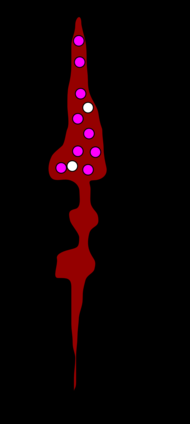 | 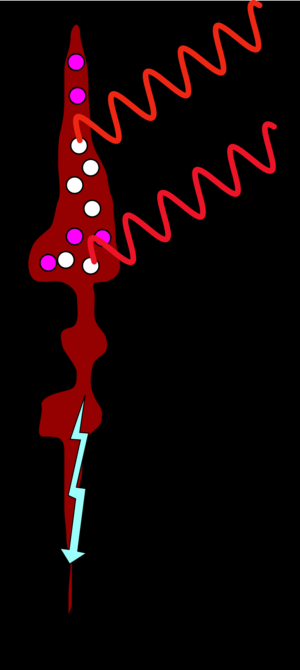 |
| A light sensitive cone cell contains proteins called opsins which are sensitve to light | When the opsins are hit by light they bleach becoming insensitive and send a signal towards the optic nerve. |
You see colour because you have 3 different types of colour sensitive cone cells, each with a slightly different opsin (called photopsins) the different versions are sensitive to different colours of light.
This means that if you shine red light on your eye it will use up all the photopsin in your red cones and you will get less sensitive to red light, but it will hardly use up any of the photopsins in your blue and green cones. This has the effect of making a white object look more white - white balancing the image.
So when you look at white light again, you will have huge amounts of opsin in your red and blue cones so they will be very sensitve and send a huge signal to your brain so you think the world has gone turquoise until your use up the opsins in the blue and green cones and everything goes back to normal.
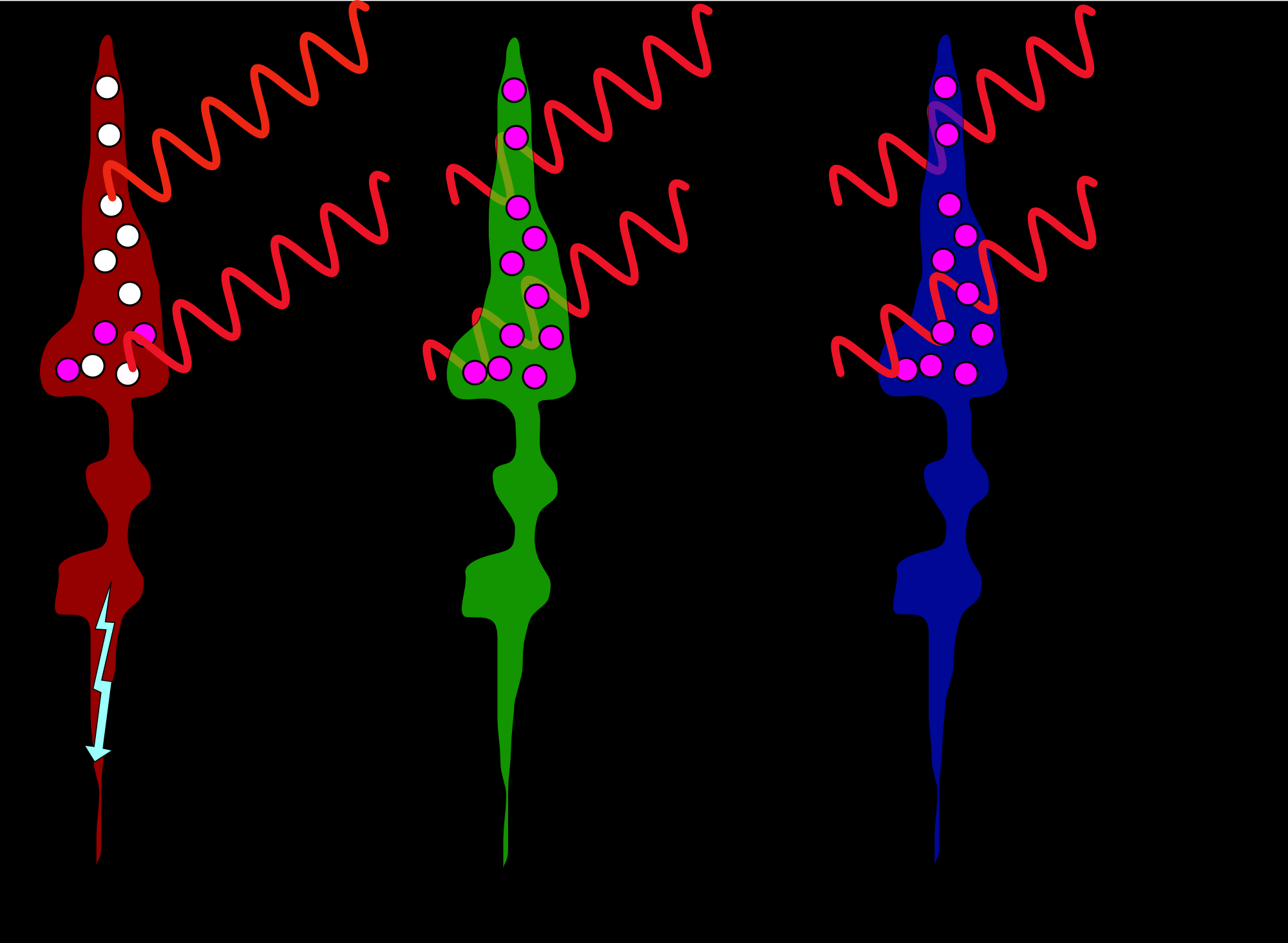 | 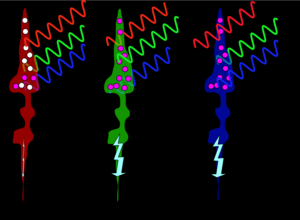 |
| Red light uses up all the opsins in the red cones but not the green and blue | If you then look at something white your blue and green cones have far more opsin, so are much more sensitive, and the world looks turquoise. |
?
- Previous Dropping Eggs
- Next Fruit Fireballs










Comments
Add a comment